Theatres removed from 2023 Theatres at Risk list
We have removed three theatres from the list as they are no longer considered at risk.
This is due to advocacy, planning and viability advice from Theatres Trust, along with the vital support of their respective local authorities, theatre operators and community groups.
Century Theatre, Coalville, Leicestershire
A unique mobile theatre, built after World War II, the Century travelled the country for 23 years with the aim of raising interest in theatre and taking productions to towns that had lost their venues during the war. Many of the towns it visited went on to build their own theatres. It settled in Keswick where it was known as the Blue Box before making its final journey in 1996 to become a permanent performance space and museum exhibit at Snibston Discovery Museum in Coalville.
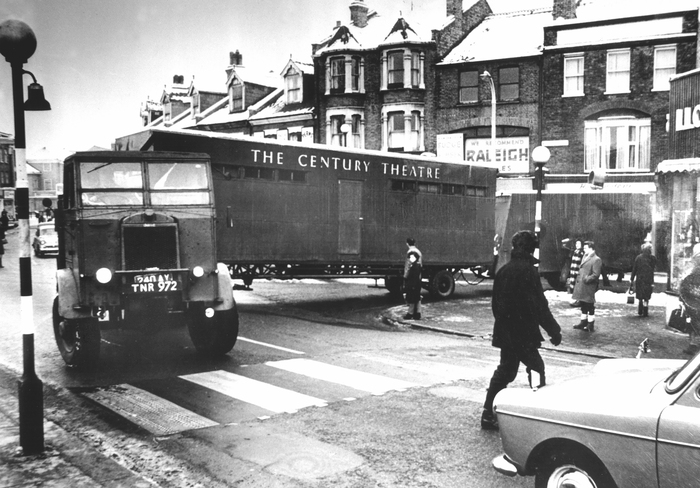 We added the Century to the Theatres at Risk list in 2014, when plans were announced to close the museum, leaving the theatre isolated and at risk. The museum building was subsequently demolished, and its cleared site and adjoining Country Park proposed for redevelopment for residential use and parkland.
We added the Century to the Theatres at Risk list in 2014, when plans were announced to close the museum, leaving the theatre isolated and at risk. The museum building was subsequently demolished, and its cleared site and adjoining Country Park proposed for redevelopment for residential use and parkland.
Theatres Trust contributed to the Snibston Masterplan through constructive conversations with Leicestershire County Council, where we discussed requirements for the building, including access, parking provision, and acoustic screening between the Century and the new buildings. The redevelopment plan that has progressed is more sensitive to the theatre, and the theatre is better integrated into plans for the area and the new Snibston Colliery Park, being more visible, with better access and improved facilities.
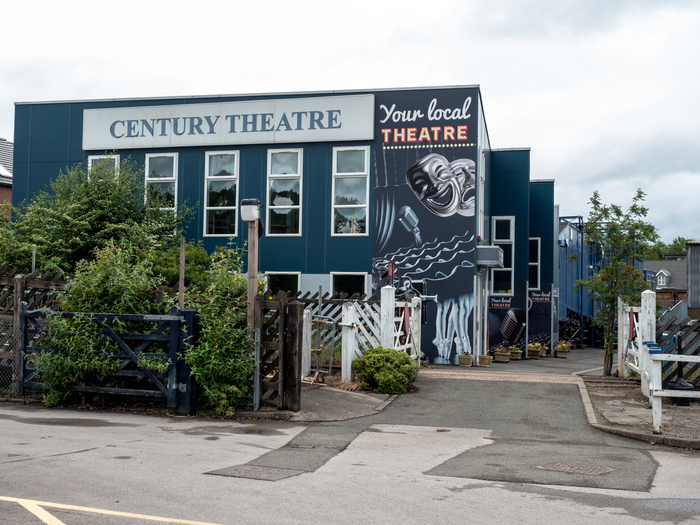 Century Theatre is owned and operated by the local authority Leicestershire County Council and has continued to offer a mixed programme of theatre, comedy and cinema while being on the At Risk list. Now that Snibston Colliery Park has opened and the theatre is better integrated with the local area, we hope it will be able to play an even more prominent role in its local community. The theatre has recently commissioned a film about its history with Covid Recovery Fund support from Arts Council England so more people will become aware of its very special heritage.
Century Theatre is owned and operated by the local authority Leicestershire County Council and has continued to offer a mixed programme of theatre, comedy and cinema while being on the At Risk list. Now that Snibston Colliery Park has opened and the theatre is better integrated with the local area, we hope it will be able to play an even more prominent role in its local community. The theatre has recently commissioned a film about its history with Covid Recovery Fund support from Arts Council England so more people will become aware of its very special heritage.
Read more about the Century Theatre in our Theatres Database.
Swansea Palace Theatre
This distinctive Victorian music hall had been vacant and deteriorating since it closed as a nightclub in 2006. The building was in private ownership and in a dangerous state of disrepair both internally and externally, becoming increasingly water and plant growth damaged. It has been on our Theatres at Risk Register since we started the list in 2006.
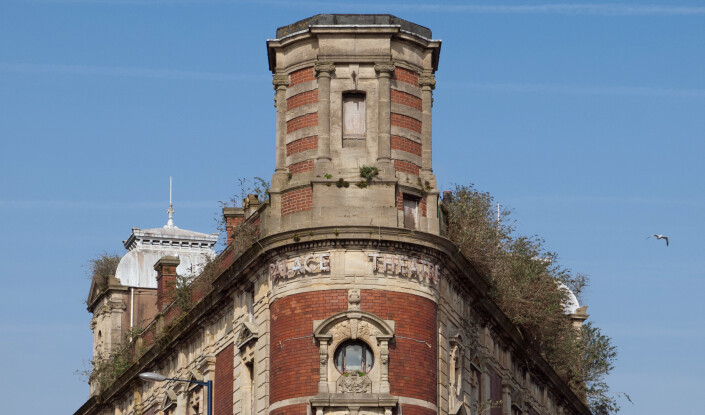 While it has been evident that there is not the demand in the city to make another theatre viable, Swansea Council shared Theatres Trust’s concern for the building and appreciation of its significance to Swansea’s history. The council part-funded urgent repairs in 2016 and, in 2020, bought the building with the aim of undertaking a sensitive restoration project to bring the building into use as an office space with the ability to accommodate small-scale performances and events. Theatres Trust contributed to pre-application discussions on the scheme and provided additional historical information about the building for the conservation statement.
While it has been evident that there is not the demand in the city to make another theatre viable, Swansea Council shared Theatres Trust’s concern for the building and appreciation of its significance to Swansea’s history. The council part-funded urgent repairs in 2016 and, in 2020, bought the building with the aim of undertaking a sensitive restoration project to bring the building into use as an office space with the ability to accommodate small-scale performances and events. Theatres Trust contributed to pre-application discussions on the scheme and provided additional historical information about the building for the conservation statement.
The scheme at Swansea Palace maintains the main volume of the auditorium and historic detailing in the space, such as the handrails and sunburner, and the minor alterations to the internal layouts are easily reversible. The work is due to complete this year.
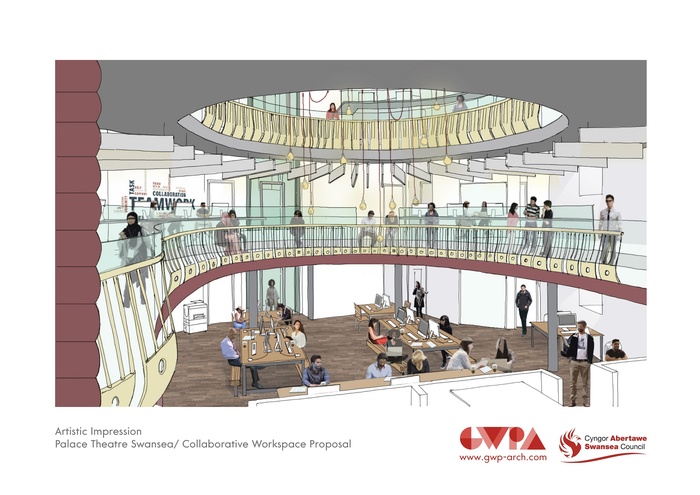
While our preferred outcome would always be for a theatre to return to live performance use, in cases where that is not viable, Theatres Trust is supportive of sympathetic alternative uses, which can be reversed in the future if local demand changes. This is a much better outcome than allowing the building to sit empty and risk severe deterioration and potential structural decay.
This project is funded by the European Regional Development Fund, the Welsh Government - via its Transforming Towns programme, and Swansea Council.
Read more about Swansea Palace Theatre in our Theatres Database.
Walthamstow Granada
Grade II* listed Granada (or EMD as it was also known) is a building that had been vacant and deteriorating for years. It was built in 1930 by architect Cecil Aubrey Masey with interior decoration by Theodore Komisarjevsky. It operated as a ciné-variety theatre, later becoming a live music venue hosting the Beatles and the Rolling Stones. It then became a cinema.
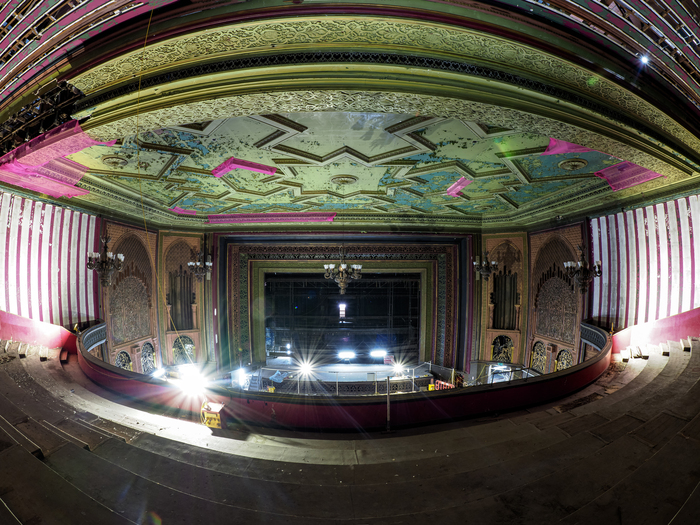 The cinema closed in 2003, and the building was bought by the Universal Church of the Kingdom of God (UCKG) who planned to turn it into a church, which Theatres Trust strongly objected to on grounds of loss of community access to the building.
The cinema closed in 2003, and the building was bought by the Universal Church of the Kingdom of God (UCKG) who planned to turn it into a church, which Theatres Trust strongly objected to on grounds of loss of community access to the building.
A local campaign was set up to save the venue’s entertainment use, passionately advocating for over a decade to keep the issue in the public eye. In 2011, Waltham Forest Cinema Trust was established to create a positive vision for the venue’s future, in association with Soho Theatre. After they joined forces with Waltham Forest Council to demonstrate this vision and its viability, the UCKG application for change of use was unsuccessful, and the decision was upheld in a public inquiry in 2012 / 13. Proof of viability of the Granada as a theatre was a key determining factor in the inquiry and Waltham Forest Council was supportive of a scheme to see the Granada restored as part of the revitalisation of Walthamstow.
There was political will at all levels of Waltham Forest Council to restore the Granada and several options were explored in the intervening years, with Theatres Trust meeting with the council, Waltham Forest Cinema Trust, Soho Theatre and other interested parties. Theatres Trust assisted Waltham Forest Council by putting it in touch with other local authorities who had carried out similar projects, including the teams behind the Storyhouse at Cheshire West and Chester Council and Stockton Globe at Stockton-on-Tees Borough Council. This enabled Waltham Forest Council to gain a better understanding of the full benefits of the restoration project and the pros and cons of different approaches.
Following the publication of the economic impact study that showed a restored Granada run by Soho Theatre - on the vision outlined - could add between £34m and £52m to the local economy over a 10-year period, Waltham Forest Council bought the building itself in 2019, committing £30m to the project to restore the building to full splendour.
Soho Theatre Company has worked on this project for over ten years, having been involved in the earlier campaigns to save the building, and having worked in partnership with Waltham Forest Council. After creating the vision and working closely with the architectural team, it formally signed an agreement to become the operating partner early in the project. In 2020, we awarded Soho Theatre Company a grant of £9,500 from our Theatres at Risk Capacity Building Programme to support business planning, in particular ensuring that this integrated with the planning and on-site works, so the building project and business plan aligned.
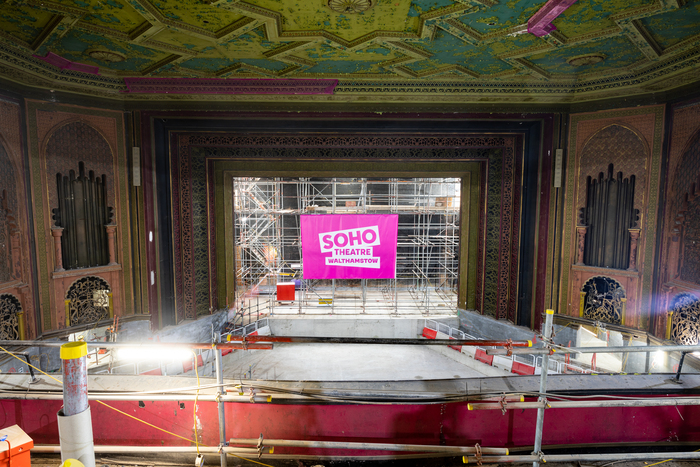 Theatres Trust continues to be involved in the project, through planning proposals and listed building consents, ensuring that the balance between restoration of the historic elements and the viability of theatre facility is maintained. The theatre is due to open later in 2023 as the Soho Theatre Walthamstow, offering a mix of comedy with theatre, music and community activities.
Theatres Trust continues to be involved in the project, through planning proposals and listed building consents, ensuring that the balance between restoration of the historic elements and the viability of theatre facility is maintained. The theatre is due to open later in 2023 as the Soho Theatre Walthamstow, offering a mix of comedy with theatre, music and community activities.
Read more about the Walthamstow Granada in our Theatres Database.
Read more about the 2023 Theatres at RIsk list.
Image credits:
- Century Theatre on the move - historical image. Credit Leicestershire County Council
- Century Theatre. Credit Ian Grundy, 2018
- Swansea Palace Theatre. Credit Ian Grundy, 2012
- Swasea Palace Theatre collaborative workspaces artistic impression. Credit: GWP Architects
- Walthamstow Granada. Credit Ian Grundy, 2020
- Walthamstow Granada. 2022